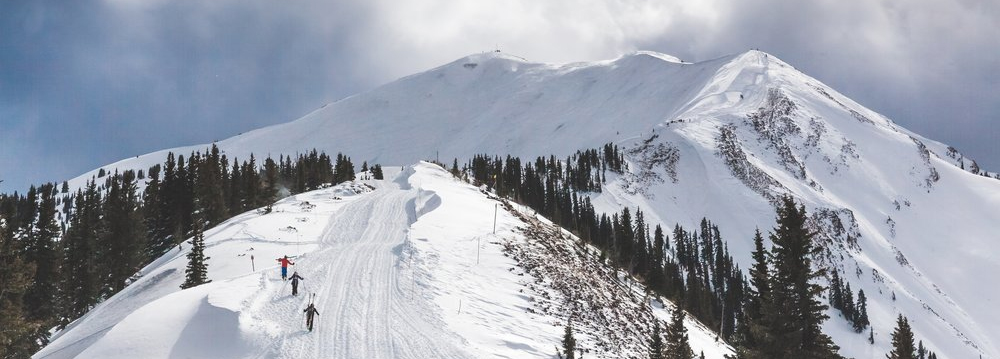
At over 12,000 feet above sea level, the Highland Bowl Aspen offers one of the most exciting inbounds ski experiences in North America. Skiers and snowboarders from all around the world come here to enjoy the one-of-a-kind hike-to terrain and the best powder that Colorado has to offer.
Your complete guide to conquering the Highland Bowl in Aspen:
- What Makes the Highland Bowl Aspen So Special?
- Accessing the Bowl
- Preparing for the Ascent
- Terrain Zones and Line Selection
- Safety Considerations
- Best Time to Ski Highland Bowl
- 5 Tips for Navigating the Highland Bowl Aspen Hike and Ski
- Frequently Asked Questions
- Conclusion
So, What Makes the Highland Bowl Aspen So Special?
The Highland Bowl is just one part of Aspen Highlands, one of the four ski resorts that make up the iconic Aspen Snowmass area. With over 1,000 vertical feet from top to bottom, including steep pitches and large faces, the Highland Bowl Aspen has become somewhat of a rite of passage for veteran skiers and snowboarders.
Even if you’ve been visiting Aspen your entire life, there are always new experiences around every turn. As a local boutique concierge service, we’ve written this guide to help you make the most of your time spent here at the Highland Bowl.
Accessing the Bowl
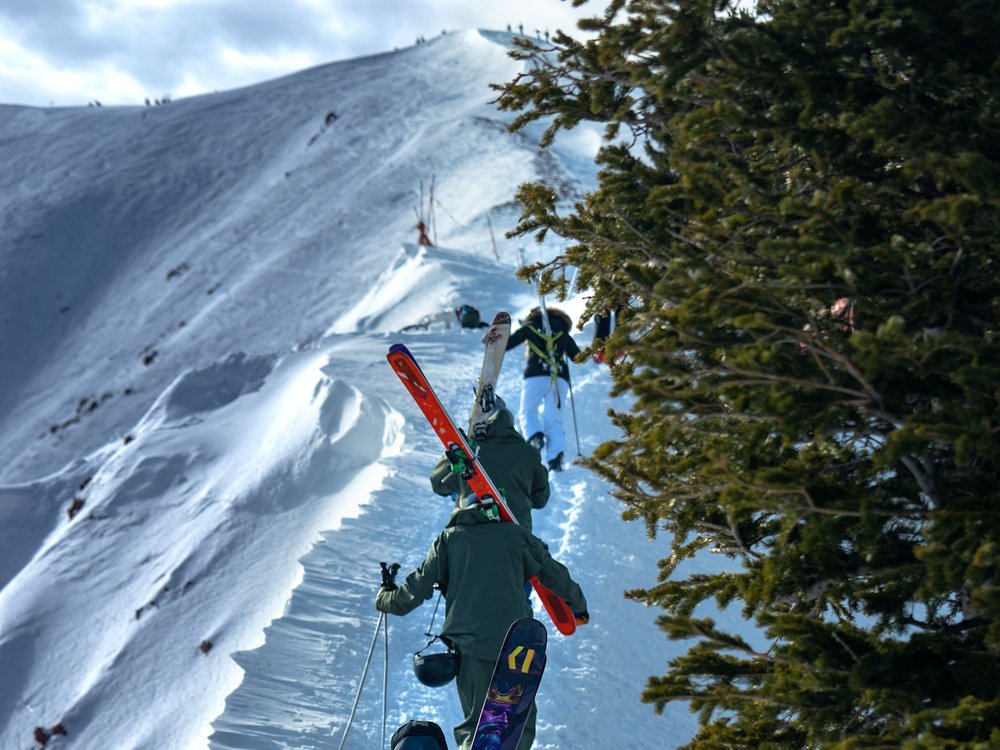
It’s important to get one thing straight right off the bat, and that is that getting to the summit of Highland Bowl isn’t easy. To start, you have to reach the top of the Loge Peak lift at Aspen Highlands. From there, you have two options:
- Hike the ridge to the top of the bowl
- Hop on the free snowcat that transports skiers part of the way up.
The full hike from the lift to the summit is about 782 vertical feet over a distance of about 0.8 miles.
Depending on your fitness level and how quickly you move, the hike can take anywhere from 30 to 60 minutes. While it’s not the most grueling climb in the world, the thin air at elevation makes the effort feel more intense, especially if you’re not used to being above 11,000 feet.
Snowcat Access and Terrain Conditions
When snowcat access is available, it takes about 0.3 miles off the total distance and shortens the hike time to around 15 to 20 minutes. Plus, the ride is gorgeous, offering sweeping views of the Elk Mountains, especially on bluebird days.
Still, there’s no other way to complete the final climb than on foot, so you have to be able to carry your skis and hike in your boots.
Whether or not you can access the summit will also depend on the weather and current snow conditions. If storm or avalanche warnings come through, snow patrol may shut down the run. Make sure to check the Aspen Highlands terrain report before heading out to see if the bowl is open and conditions are safe.
Your concierge at Aspen Luxury Concierge can assist with up-to-the-minute updates and customized recommendations.
Preparing for the Ascent
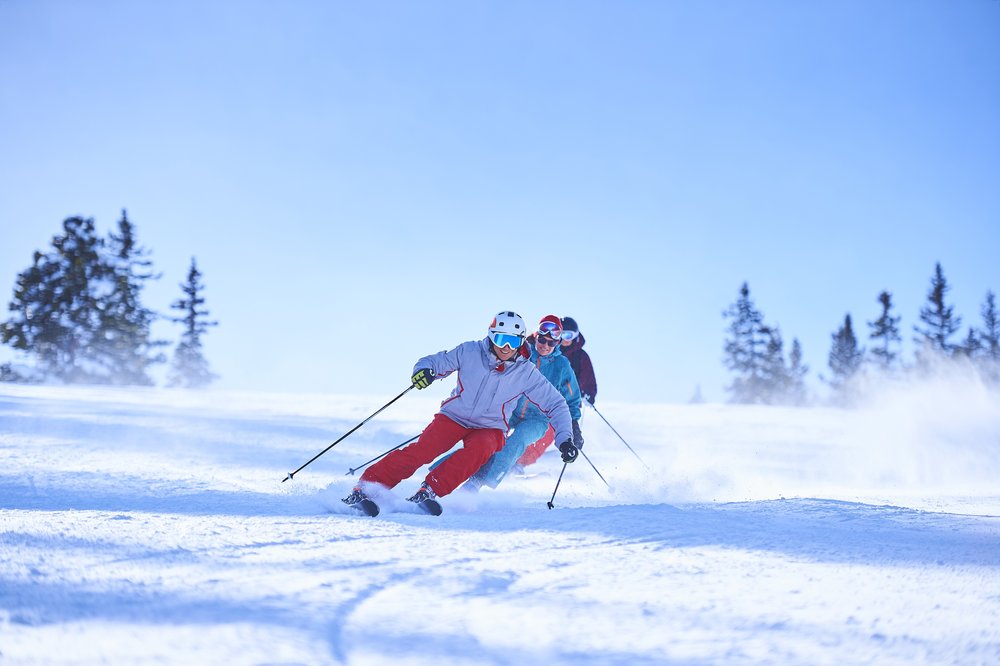
You don’t need to be a mountaineer to hike Highland Bowl Aspen, but being relatively fit is important. The hike climbs along a narrow ridge with steep drop-offs on either side, and with elevation, there’s quite a bit of effort involved.
If you’re visiting from somewhere closer to sea level, we recommend giving yourself a few days to acclimate before attempting the ascent.
What to Wear
Dress in layers. We can’t stress that enough.
You’ll get warm on the hike pretty quickly, even if it’s cold out. The summit, in particular, can be very windy and exposed, so have a moisture-wicking base layer, an insulated midlayer, and a windproof shell will be your best bet.
Also, make sure to bring a hat, gloves, goggles, and a neck gaiter or balaclava. Since there aren’t any boot packs or alternate routes for the hike, having properly fitted ski or snowboard boots that you can walk in is crucial too.
Remember, you’ll have to carry your skis or board, so having backpack straps or carrying them diagonally across your shoulders for better balance can be helpful. Many experienced bowl skiers use adjustable poles, which can help during the steeper parts of the climb.
Additional Tips
Hydration is key, and a small, insulated water bottle in your pack can make all the difference.
Take your time, pace yourself, and stop when needed. Even the most experienced athletes can have a hard time with the thinner air, so listen to your body and don’t push yourself on the way up.
If you need to stop, enjoy your time taking in the views or snapping some photos. It’s a truly picturesque part of the mountain, one of the other reasons so many travelers come up here.
If you’re new to Aspen snowsports or unsure if you’re ready to take on the run, our team at Aspen Luxury Concierge can coordinate a private guide to make sure you’re prepared the day of your hike.
Terrain Zones and Line Selection
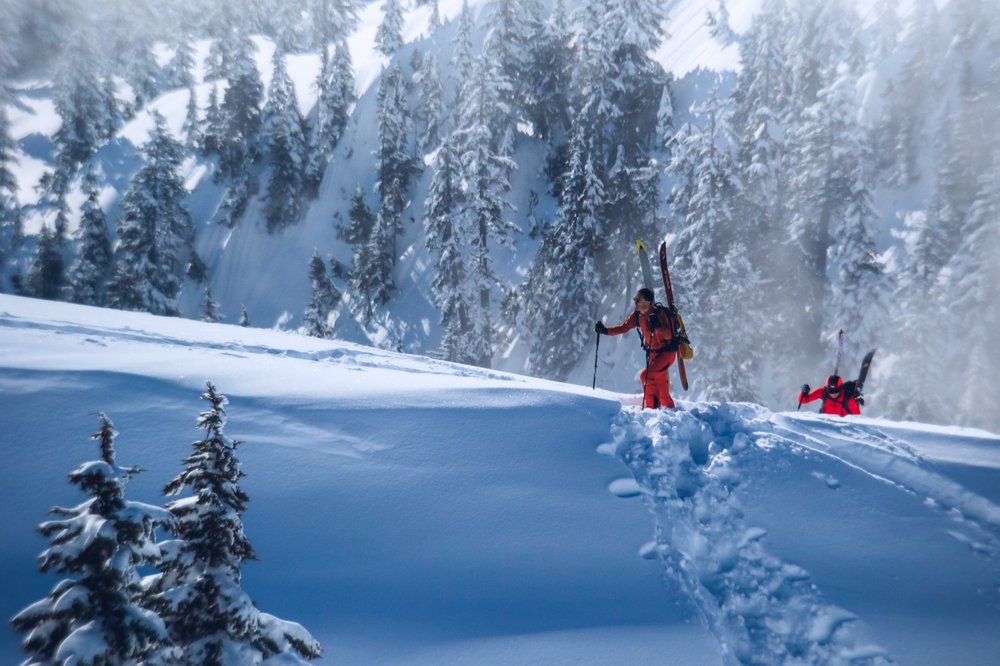
The Highland Bowl Aspen is roughly divided into zones based on entry points, pitch, and exposure. From skier’s left to skier’s right, you’ll find the G-Zone, B-Zone, Y-Zone, and O-Zone.
Each one has a different type of run, and depending on the conditions, certain zones may have better snow or be more accessible than others.
- G-Zone: Closest to the summit, though accessible first after the hike. It has some of the steepest and most challenging lines in the bowl, which is also why it’s one of the most popular.
- B-Zone: Slightly mellower than G-Zone but still steep. The area has more open faces and less exposure to rock features.
- Y-Zone and O-Zone: Located a bit farther down the ridge and across from the main bowl. These lines don’t tend to have as much traffic, and hold snow really well after storms.
Choosing the Right Line for Your Skill and Conditions
Some of the most popular runs include Be One, Maroon Bowl, Ozone, and Full Curl. Most runs in the Aspen Highlands Bowl are rated double black diamond, so make sure you’re comfortable with steep terrain.
Some lines require a straight drop-in with no margin for error, while others have more space to make initial turns. We recommend watching a few skiers descend first to get a better sense of timing and spacing.
Even with all of that said, the entire Aspen Highlands Highland Bowl area offers so much variation that even repeat visitors can find something new to explore each season.
Safety Considerations
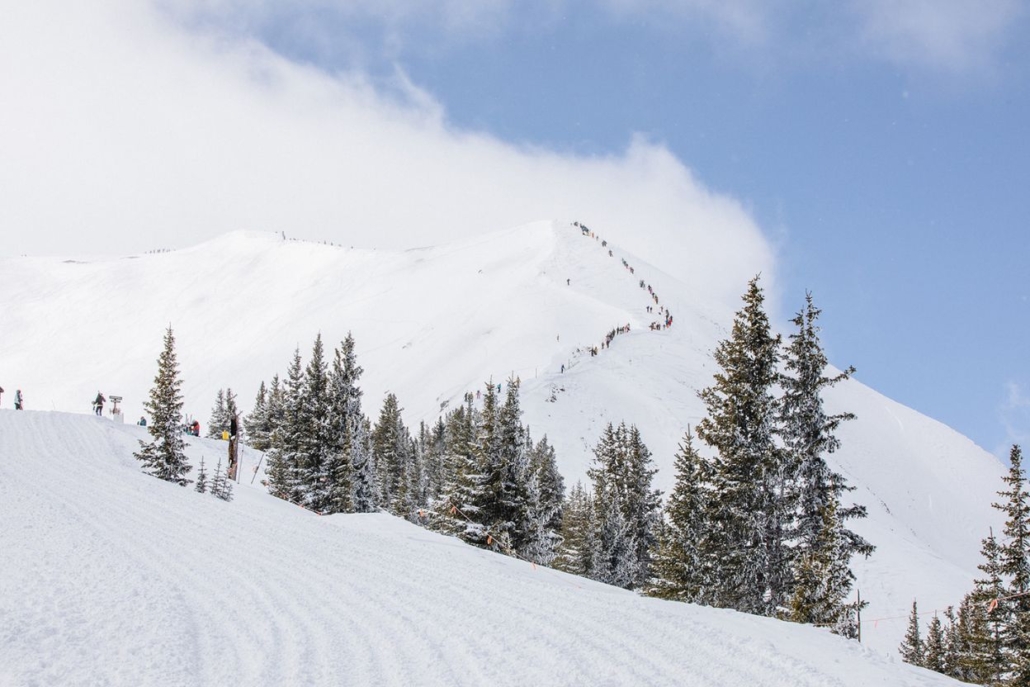
Aspen Highlands Highland Bowl is technically inbounds, but there are some serious hazards to watch out for. The area is subject to full avalanche control by ski patrol, but the steep terrain, wind-loaded slopes, and frequent weather swings mean that conditions can still be unpredictable.
When the bowl is open, patrol will have done extensive control work with explosives. Even so, natural slides can still occur, especially after recent storms. Make sure you respect closures and posted warnings. If patrol hasn’t dropped the rope, don’t duck it. It can put you and others at risk.
Weather
Weather is another big factor.
Whiteouts and wind gusts are common at the summit, and even sunny days can shift to low visibility pretty surprisingly fast. Always check the latest mountain weather report before your hike and be prepared to adjust plans if conditions change.
The exposure of the Highlands Bowl Aspen means it can change from light and powdery to wind-packed in a few hours. It’s up to you to make the right call, assess your abilities, and stay alert during your time up there.
When in doubt, go with someone who knows the area well or get in touch with Aspen Luxury Concierge to connect you with an experienced local guide.
Best Time to Ski Highland Bowl
While the Highland Bowl Aspen can open as early as late December on a good season, prime conditions typically show up mid-January through early March. During this time, the snowpack is deeper, avalanche conditions are more stable, and storms bring tons of fresh powder.
However, just because there’s a storm doesn’t mean the bowl will open immediately. It often takes anywhere from a few hours to a few days for patrol to perform avalanche mitigation, depending on how much snow has fallen and how wind-affected it is.
We recommend trying to time your hike a day or two after a big dump when the bowl reopens.
Timing Your Hike and Watching the Weather
The best time of day to hike is usually between 10 a.m. and 1 p.m. By then, patrol has finished control work, the snow is softer (especially in spring), and the hike itself is more pleasant with the sun up. Early morning hikes can be extremely cold and windy, while late-day attempts can have low visibility or closures.
The best conditions for a memorable bowl day are clear skies, low wind, recent snowfall, and stable temps. Avoid hiking during high winds or stormy weather, as the exposure along the ridge and summit can be dangerous.
Your Aspen Luxury Concierge can always check the Highland Bowl Aspen mountain report on your behalf and help plan the perfect day around the bowl’s opening schedule.
5 Tips for Navigating the Highland Bowl Aspen Hike and Ski
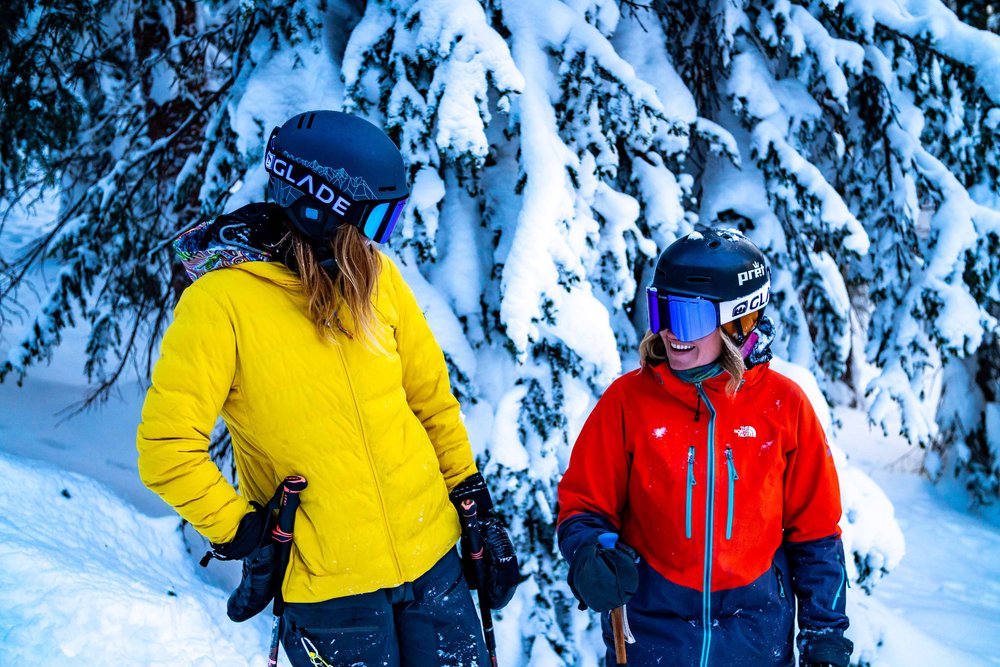
Since the bowl is a bucket list item for skiers across the country, everyone wants their first chance at the bowl to be perfect. The key for a fantastic day of skiing is preparation. If you go into your trek with all the right tools, you are sure to end the day with stories to tell.
1. Come Prepared with the Right Gear
When you hike towards Highland Peak, you will need to carry your skis. Aspen locals recommend stopping by Highland ski patron HQ near Loge Peak to buy bowl straps for $10 each. These straps allow you to wear your ski across your back, which distributes their weight and allows you to hike hands-free.
2. Timing Your Trip Can Make All the Difference
Some weather conditions make the hike to the peak downright miserable, but they render the ride down unforgettable. Locals recommend hitting the bowl during a storm. By the time you hit the slopes, every ski run will be covered in a layer of fresh powder. Consider heading right through North Woods Gate for unbeatable tree skiing along untouched paths.
During the colder winter months when it hasn’t snowed in a few days and a high pressure system is passing over Aspen, the Highland Bowl snow gets chalky. Skis leave rips in the snow that get filled in just as quickly.
3. Don’t Be Afraid to Hitch a Ride
Some locals dismiss the snowcat as “cheating,” but there are benefits to catching a ride. The snowcat can knock time off your hike, allowing you to squeeze in a few more runs before the resort closes. Visitors are advised to take advantage of the snowcat, at least on their first trek. It is normal to not feel 100% when you first experience Aspen altitude. You should plan on taking it slow at first until you get used to the elevation. Once your lungs adjust, then you can try conquering the Highland Bowl Aspen hike without a snowcat ride.
4. Stay Hydrated
Camelbacks and collapsible water bottles are the way to go when you ski the bowl. Unlike other runs, you don’t have easy access to an on-mountain restaurant or lodges. Local skiers recommend bringing more water than you think you’ll need. The Aspen Highlands Bowl hike is more strenuous than it looks and hiking at altitude really takes it out of you.
5. You Don’t Need to Summit to Get a Good Run
Some skiers get “peakitis” and hike past great runs in favor of reaching the peak. You don’t have to reach the top of the bowl to reach challenging runs. There are plenty of good runs that start part-way up the bowl. For some skiers, stopping their hike short for a run allows them to fit it more runs in a day. However, if you do decide to go for the peak, you’ll be rewarded with a stunning view of the Maroon Bells.
Frequently Asked Questions About Highland Bowl Aspen
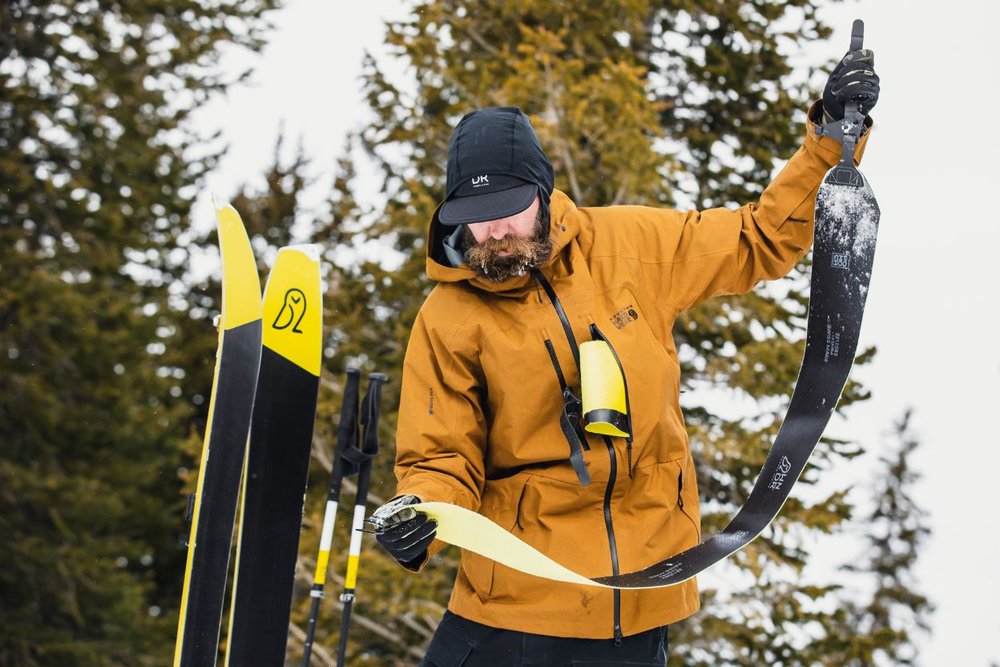
Highland Bowl is very challenging in terms of both hiking and skiing. The hike to the peak requires athleticism and stamina. The ski runs on the bowl are all black and double black diamonds, so skiers should be intermediate if not experienced to handle the terrain.
The peak of Highlands Mountain is 12,392 feet above sea level. The hike up the bowl begins at 11,610 for a total climb of 782 feet.
The bunny hill on Snowmass is where beginner skiers and snowboarders should start out. Once someone graduates from the bunny hill, the easiest runs are Lunchline, Dawdler, and Scooper. These are all green circle runs, which have no obstacles and moderate slope.
Highland Bowl ranks among the toughest inbounds ski areas in North America. Tackling the approach demands serious endurance, and the descents challenge even seasoned skiers—most runs earn a double black diamond rating. If you thrive on steep terrain, variable snow, and high-altitude conditions, you’ll find some of Colorado’s best powder waiting for you. Just be ready: both the hike and the ride down test your skills and mental grit.
The full hike to the summit of Highland Bowl covers 782 vertical feet over roughly 0.8 miles. Depending on your fitness level and the trail conditions, it typically takes between 30 to 60 minutes to complete. If you opt to ride the complimentary snowcat part of the way up, it can cut the hike down to just 15 to 20 minutes—though you’ll still have to climb the final stretch on foot with your gear in tow.
Highland Bowl is part of Aspen Highlands, one of the four ski areas that make up the renowned Aspen Snowmass resort in Colorado. Located above the Loge Peak lift, it sits high in the Elk Mountains and is accessible via a hike along the ridgeline. This hike-to terrain is a rite of passage for experienced skiers and snowboarders visiting the Aspen area.
The summit of Highland Bowl peaks at an elevation of 12,392 feet above sea level. The hike begins at about 11,610 feet from the top of the Loge Peak lift. At this lofty altitude, you’ll ski and hike well above the tree line—so get ready for thinner air, strong winds, and jaw-dropping views of the Maroon Bells and surrounding peaks.
Make Your Highland Bowl Aspen Ski Adventure the Best It Can Be!
When you plan your ski trip with Aspen Luxury Concierge, our team:
- Books you a luxury vacation rental that is conveniently located near the slopes.
- Makes dinner reservations at one of the best restaurants in Aspen
- Arranges transportation from the airport as well as around Aspen.
- Stock your vacation rental with nutrient-rich, organic snacks to fuel your ski day.
- If needed, we can rent additional gear for you or go shopping for any extra layers of clothing you may need.
- Can book you additional services like a spa session, one-on-one ski coaching, or a fitness class for conditioning.
So, whether you’re a seasoned alpine conqueror or a brave newcomer let Aspen Luxury Concierge guide your way to unforgettable moments amidst the peaks: start planning your Highland Bowl Aspen

 Twitter
Twitter
 LinkedIn
LinkedIn
 Reddit
Reddit
 Tumblr
Tumblr
 Pinterest
Pinterest


